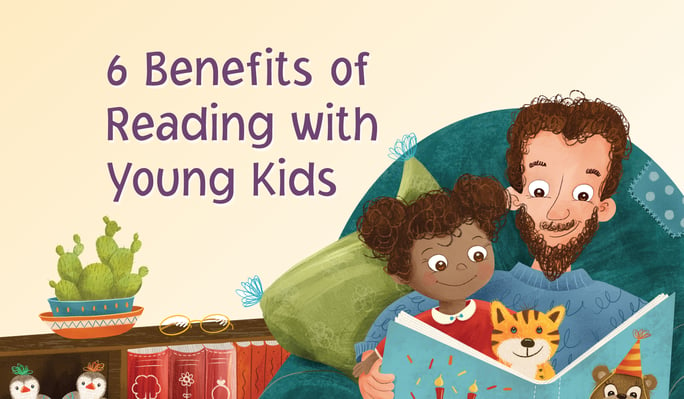Many parents enjoy reading books with their kids. But did you know that it actually is beneficial for your child’s development? Below are insights from parenting sources and experts that detail the benefits of reading age-appropriate books with young children.
Build a Close Bond
"Reading a book to your newborn is a one-on-one activity that you can really turn into a special time with your baby," says Mary Ann Abrams, MD, medical director of Reach Out and Read. "It exposes the baby to the sound of your voice, which is soothing for them." In fact, a recent study in the Journal of Developmental and Behavioral Pediatrics found that reading to babies in the NICU can help parents develop the same feelings of intimacy that parents of healthy newborns cultivate in the days and weeks after a baby's birth.
Enhance Vocabulary Development
Believe it or not, by the time babies reach their first birthday they will have learned all the sounds needed to speak their native language. The more stories you read aloud, the more words your child will be exposed to and the better they will be able to talk.
Hearing words helps to build a rich network of words in a baby's brain. Kids whose parents frequently read to them know more words by age two than children who have not been read to. And kids who are read to during their early years are more likely to learn to read at the right time.
Encourage Exploration
At three months of age, your baby shows excitement when a toy or book is placed in front of them. Now they can move their eye muscles to examine things of interest and can identify most colors. Choose toys and books that have contrasts in color and pattern, texture, and sound, as well as flexibility in movement, so you have opportunities to describe the toys or pictures using varied and rich vocabulary. Language-enhancing toys and books for this age give you and your child lots to talk about as you describe the toy, read the book, or talk about the illustrations.
As babies learn to sit up, crawl, stand, and walk, the possibilities quickly expand. They’re ready to experiment with nesting cups, activity boxes, stacking rings, large blocks, and, a little later, with shape-sorters. These toys help develop fine-motor skills and teach relationships among objects. Cloth or board books, especially intriguing with pictures of faces or familiar objects, let them practice object recognition and instill basic ideas of language.
Entertain Them
Unlike with solid foods, it is never too early to start reading with your baby. Who cares if it’s the sports page or Elmo—it will be the time you share together that counts, so have fun with it! Whatever babies are interested in, they predictably put straight in their mouths. Books are no exception. By the time your child is four months old, they will show an interest in books and start to explore them by chewing or throwing them. At this age, your baby needs sturdy vinyl or cloth books that can survive chewing and are not easily torn. Now that your baby can grab for a book and show interest by batting at it, gumming it, or turning the pages, you’ll find yourself especially appreciative of board books for their drool-proof nature.
During the six-to-twelve-month stage, babies become less interested in mouthing books and more interested in the story. You can promote your baby’s interest in books by looking at books with them and talking about the pictures, especially those that interest your baby. Invite your eight- or nine-month-old to turn the pages.
Make Connections
Infants tune in to the rhythm and cadence of voices, especially the familiar ones of their parents and caregivers. While initially, the rhythmic phrase "Brown bear, brown bear, what do you see?" may not hold meaning, your baby is taking in the sounds of language and how they fit together. As babies see a picture of a red bird in the book and you name the bird, they begin to make the connection between what you say and the picture of the red bird. The more you read that book, the stronger the connection grows. The repetitive storyline makes the book fun, engaging, and easier to remember. Reading to babies is not only a way to inspire a love of books from infancy, but also an important way to grow a baby's vocabulary—first their understanding vocabulary and later their speaking vocabulary.
Restful Sleep
Reading to babies can be a soothing, comforting activity that will help your child get ready for bed. But don’t be surprised if it takes a few sessions before you and your little one get into a rhythm with the right books and the right routine. By incorporating calm, unhurried reading into your little one’s nighttime routine, you’ll be helping to set the stage for a restful night’s sleep.
Looking for some board books to get you and your child started? Click here for some of our favorites!
Sources: Reach Out & Read, Kids Health, Play on Words, Child Development Institute, PBS, Healthy Children
Originally Published 5/19/2016

